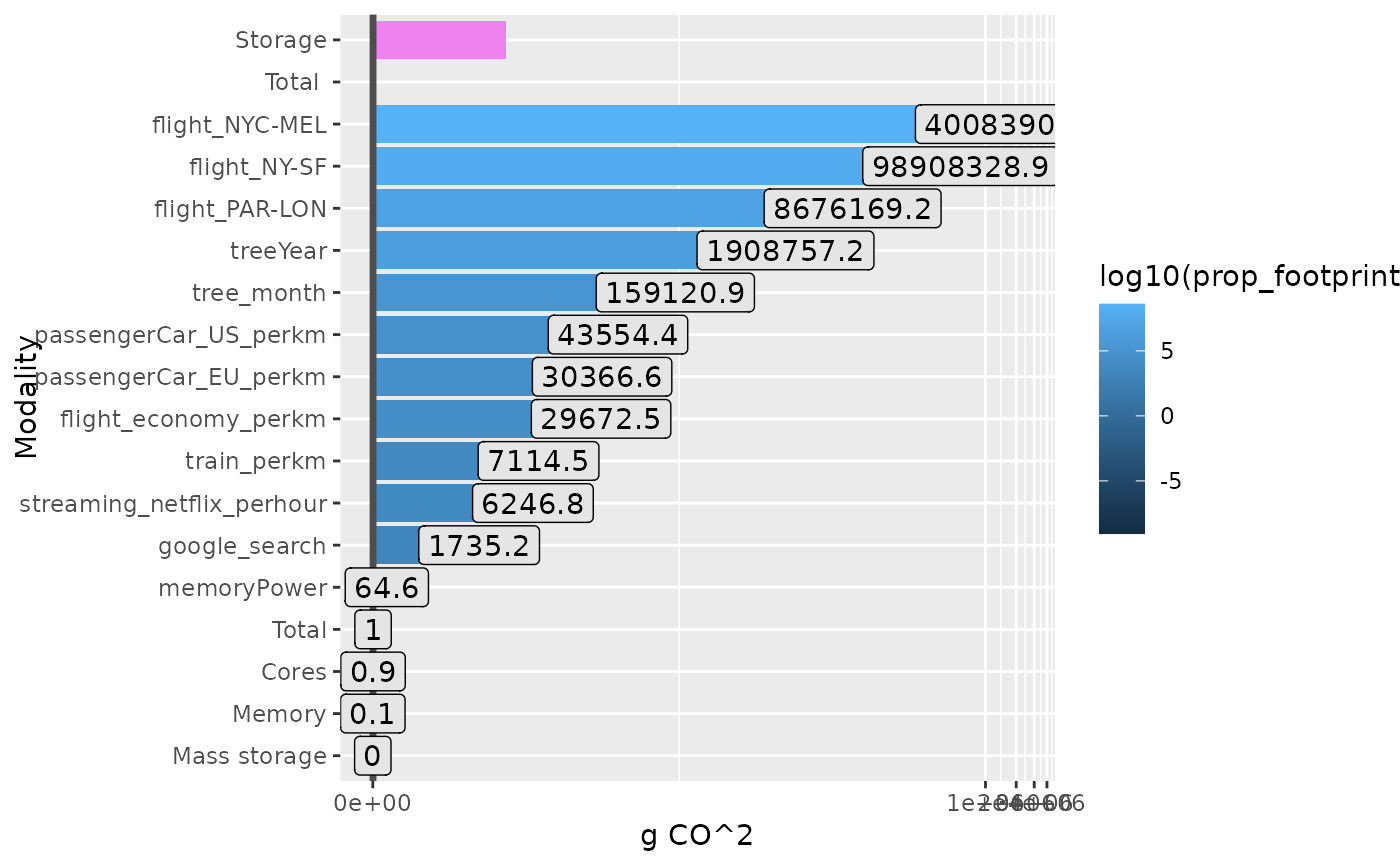Calculates the total carbon footprint of a targets pipeline by analyzing
the metadata from completed targets. This function is a wrapper around
ga_footprint() that automatically extracts runtime and storage information
from the targets metadata and computes the cumulative environmental impact.
The function aggregates:
Total runtime across all targets
Memory usage patterns (when storage estimation is enabled)
Hardware specifications you provide
Usage
ga_targets(
names_targets = NULL,
targets_only = TRUE,
complete_only = FALSE,
store = targets::tar_config_get("store"),
tar_meta_raw = NULL,
...
)Arguments
- names_targets
Character vector of target names to include in analysis. If NULL (default), analyzes all available targets. See
?targets::tar_meta()- targets_only
Logical (default TRUE). Whether to analyze only actual targets or also include metadata on functions and other global objects.
- complete_only
Logical (default FALSE). Whether to return only targets with complete metadata (no NA values in critical fields).
- store
Character string, path to the targets data store. See
?targets::tar_meta()for details.- tar_meta_raw
Optional data.frame. If provided, uses this metadata directly instead of calling
targets::tar_meta(). Useful for custom analyses or when working with pre-loaded metadata.- ...
Additional arguments passed to
ga_footprint(), such as:location_code: geographical location for carbon intensityn_cores: number of CPU cores usedTDP_per_core: thermal design power per corememory_ram: RAM memory in GBPUE: power usage effectiveness
Value
A list with the same structure as ga_footprint().
See ?ga_footprint for complete details on return values.
Examples
if (FALSE) { # \dontrun{
# Basic usage in a targets project directory
pipeline_footprint <- ga_targets()
# With specific hardware configuration
pipeline_footprint <- ga_targets(
location_code = "FR",
n_cores = 4,
memory_ram = 16,
PUE = 1.2
)
# Analyze specific targets only
pipeline_footprint <- ga_targets(
names_targets = c("data_prep", "model_fit", "results"),
add_storage_estimation = TRUE
)
} # }
# The next exemple emulate a mini-targets before to ask for tar_meta
tar_dir({ # tar_dir() runs code from a temp dir for CRAN.
tar_script(
{
list(
tar_target(
name = waiting,
command = Sys.sleep(2),
description = "Sleep 2 seconds"
),
tar_target(x, writeLines(
targets::tar_option_get("error"),
"error.txt"
))
)
},
ask = FALSE
)
tar_make()
tm <- tar_meta()
res_gat <-
ga_targets(
tar_meta_raw = tm,
n_cores = 6,
TDP_per_core = 15.8,
location_code = "FR",
PUE = 2,
add_storage_estimation = TRUE
)
ggplot(res_gat$ref_value, aes(
y = reorder(variable, as.numeric(value)),
x = as.numeric(value), fill = log10(prop_footprint)
)) +
geom_col() +
geom_col(data = data.frame(
variable = "Total ",
value = res_gat$carbon_footprint_total_gCO2
), fill = "grey30") +
geom_col(
data = data.frame(
variable = "Cores",
value = res_gat$carbon_intensity * res_gat$power_draw_for_cores_kWh
),
fill = "darkred"
) +
geom_col(
data = data.frame(
variable = "Memory",
value = res_gat$carbon_intensity * res_gat$power_draw_for_memory_kWh
),
fill = "orange"
) +
geom_col(
data = data.frame(
variable = "Storage",
value = res_gat$carbon_intensity * res_gat$power_draw_per_gb
),
fill = "violet"
) +
scale_x_continuous(trans = "log1p") +
geom_vline(
xintercept = res_gat$carbon_footprint_total_gCO2,
col = "grey30", lwd = 1.2
) +
geom_label(aes(label = round(prop_footprint, 1)), fill = "grey90") +
xlab("g CO^2") +
ylab("Modality")
})
#> + x dispatched
#> ✔ x completed [1ms, 44 B]
#> + waiting dispatched
#> ✔ waiting completed [2s, 44 B]
#> ✔ ended pipeline [2.1s, 2 completed, 0 skipped]

